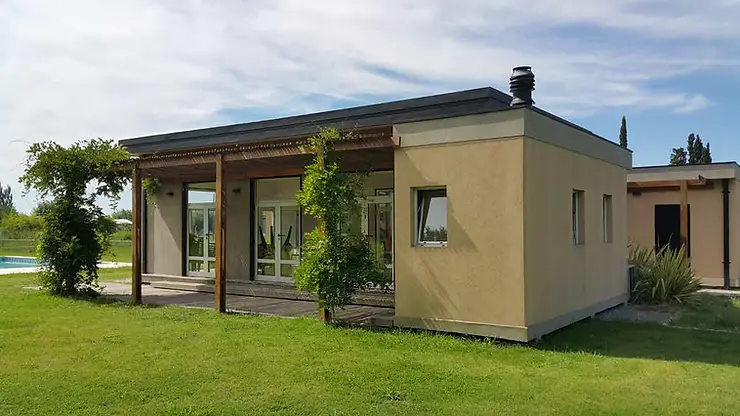Precast concrete homes are buildings that employ a structural system made up of elements such as walls, roofs and floors, which are prefabricated in an industrial plant. These components are transported to the construction site, where they are assembled to form the complete home. This approach offers an agile and efficient alternative compared to traditional construction, since much of the work is done in a controlled environment off-site, which allows for considerably reduced execution times and improved quality of the final product.
Main Features of Precast Concrete Homes
1. Precast Components Structural elements, such as wall panels, roofs and slabs, are made in molds within the factory, guaranteeing precision and uniformity in quality. Once manufactured, they are transported and assembled at the construction site using specialized machinery.
2. Standardization Manufacturing in an industrial environment allows for standardization of components, which ensures consistency in quality and minimizes errors or variations in dimensions and finishes.
3. Customizable Design Although it is a modular system, prefabricated homes offer flexibility in design. Clients have the possibility to adjust the plans and configurations according to their needs and preferences, thus allowing customization in both the distribution of spaces and the final finishes.

Advantages of Precast Concrete Homes
1. Speed of Construction One of the main advantages of this system is the significant reduction in execution times. By manufacturing the components simultaneously with the preparation of the land, the assembly process on site is agile, allowing projects to be completed in a matter of weeks or a few months.
2. Controlled Quality The production of the components in a controlled environment ensures a high standard of quality, which minimizes errors and defects in the materials. This translates into greater durability and a more precise finish compared to traditional construction techniques.
3. Strength and Durability Precast concrete provides remarkable resistance to heavy loads, extreme weather conditions and natural phenomena such as earthquakes or fires. This robustness guarantees a long lifespan for the home, increasing its long-term value.
4. Thermal and Acoustic Insulation Precast concrete panels can include insulating materials that improve the thermal and acoustic performance of the home. This not only contributes to greater energy efficiency, but also reduces energy consumption associated with air conditioning.
5. Lower Environmental Impact This method generates less waste during the construction process and optimizes the use of materials, which reduces the environmental impact compared to traditional techniques. In addition, by shortening the construction time on site, the pollution generated by the movement of heavy machinery is reduced.
6. Versatility in Design Although the prefabricated system is usually associated with an industrial or minimalist style, prefabricated concrete homes can adapt to a wide variety of architectural and aesthetic styles. Finishes and textures are customizable, allowing you to create a look that reflects the owner’s tastes and preferences.
7. Lower Cost In many cases, the total cost of a prefabricated home is lower than that of a home built using traditional methods. This is due to the reduction in construction times and expenses related to labor, which allows you to optimize the project budget.

